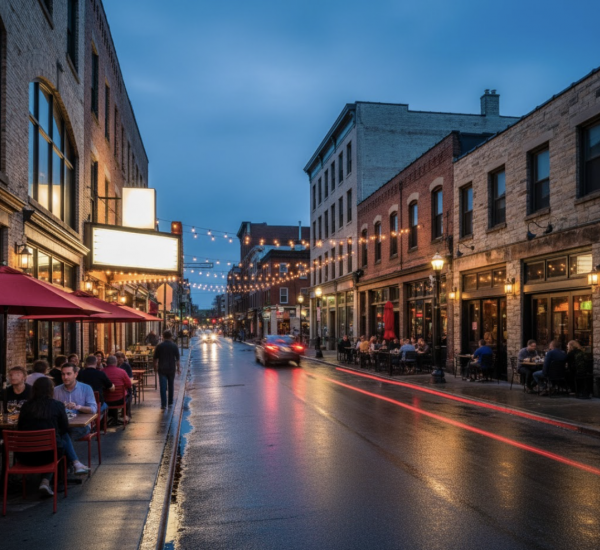The restaurant industry is a competitive field where innovation and quick thinking decide who stays and who fades. In the United States alone, over 749,000 restaurants compete for the same customers. Every week, a new dining concept opens nearby that offers something fresher or more affordable.
Many restaurateurs struggle to stand out. When success feels out of reach, they keep wondering how to cope with competition in business.
The reality is that success in this competitive industry does not depend only on great food or low prices. Winning locally means knowing your market better and creating experiences that customers remember long after the meal is over.
In this post, you will discover seven practical and proven ways to keep your restaurant at the top of everyone’s dining list. Let’s start!
1. Know Your Market and Your Customer
Every successful restaurant begins with a deep understanding of its local market. You cannot dominate your area unless you know who your customers are and where they like to dine.
Notice what’s happening around you, such as which restaurants are busy and how local events or new businesses affect dining habits. Even small changes like a new school opening nearby or more office workers moving in can change the kind of guests you attract.
Next, create simple customer profiles. A café near a college might focus on fast service and affordable meals for students. A suburban bistro could appeal to families looking for comfort and generous portions. When you know what matters most to your guests, you can design experiences that feel personal and keep them coming back.
Most competitors rely on guesswork instead of data. Use short surveys or social media polls to see what customers love and what they skip. Each bit of feedback helps you refine offers that can put your restaurant ahead locally.
2. Turn Data Into Direction
Once you have a clear picture of your market and customers, the next step is to put that knowledge to work.
Which menu items sell out fastest? When are your busiest times, and when are tables empty? Are customers ordering add-ons or skipping certain items? Use these insights to adjust your menu and promotions. For example, highlight popular dishes or train staff to upsell items that aren’t selling well.
If lunch traffic is slow nearby, try a weekday combo menu for office workers. If your area lacks late-night options, extend your hours and promote them on social media or local listings. This is how you turn insights into proactive growth.
3. Build a Strong Local Brand Identity
Build a strong local brand identity by making your restaurant memorable. Make your brand stand out in everything guests notice, such as your décor, how staff greet them, your logo, and your menu.
Tell a story through your brand. Showcase farm-to-table ingredients and feature a signature family recipe. Or you can spotlight collaborations with local bakers or artists.
Unique table settings or a custom playlist can make the dining experience memorable. Use a tagline like “Where Flavor Meets Community” or “Your Neighborhood, Your Table” to help people remember what makes your restaurant unique.
4. Focus on Quality Food and Service
No marketing strategy can fix poor food quality. In restaurant competition, flavor and service win long-term loyalty. Your guests notice every detail, from the temperature of a meal to how quickly they are greeted at the door.
Train your team to know the menu and notice what guests need before they ask. They should handle requests or complaints with a smile.
Consistency also matters. Guests trust restaurants that deliver the same experience every time. Keep your recipes and cooking methods consistent across shifts so diners always know what to expect.
5. Use Smart Pricing and Menu Strategies
Great food and service matter, but if your pricing doesn’t make sense, it can hurt your business. For smart pricing, start by checking what similar restaurants in your area charge and design your menu accordingly.
Get creative with specials to attract more customers without cutting into profits. For example, a “Build-Your-Own Taco Tuesday” for office crowds or a weekend “Family Pizza Night” with a free dessert can drive traffic.
You could also offer a seasonal tasting menu, like small plates of your best appetizers paired with local craft beers, to encourage customers to try more dishes.
Pay attention to portion sizes and value perception. A slightly larger portion or a signature side, such as truffle fries or spiced roasted vegetables, can justify a higher price and make guests feel they’re getting value for money.
6. Boost Your Online Visibility
Today’s diners make their decisions online before stepping into a restaurant. That is why optimizing your online presence is an essential step in learning how to make your restaurant stand out to local diners.
It starts with an optimized Google Business Profile. Complete your information and update photos frequently. Maintain an active blog or news section where you share insights or upcoming events.
Search engine optimization (SEO) helps customers find you online. Use location-specific phrases like “best brunch in [city]” or “family-friendly dinner near [neighborhood]” in your website content and menus to show up in local searches.
Customer reviews are another game-changer. Encourage satisfied guests to leave authentic feedback and reply to each review promptly. A simple thank-you or thoughtful response builds trust and shows you care.
7. Embrace Technology to Stay Ahead
Modern restaurants do better when technology works for them. A point-of-sale system can track sales and manage inventory, while automated tools take it further.
For example, review management software monitors guest feedback in real time, and analytics dashboards reveal trends to help you adjust your menu or staffing efficiently.
Online ordering and reservations reduce mistakes and free up staff to focus on better service.
QR code menus and contactless payments make the dining experience faster and smoother. Using these tools strategically gives your restaurant an edge over local competitors
Mapchise: Your Secret Weapon for Local Success
While every restaurant can access data, not all know how to turn it into profit. That is where Mapchise stands apart.
Built exclusively for restaurants, Mapchise transforms raw data into actionable intelligence. You can identify profitable neighborhoods before expanding. You can also design menus that match local tastes.
The platform’s AI-driven intelligence eliminates guesswork and empowers you to grow smarter and more profitably.
If your goal is to outthink your rivals rather than outspend them, Mapchise is the advantage your business has been missing.
Conclusion
Restaurant competition will never disappear. It evolves with every new menu trend or delivery innovation. The restaurants that thrive are the ones that understand their market and make data-driven decisions.
The future belongs to restaurant owners who think like strategists and act with intention. Local success is about serving the right people with the right strategy, backed by smart competitor analysis.
Start today with intelligent tools like Mapchise. Turn insight into action and watch your restaurant rise above the rest.


